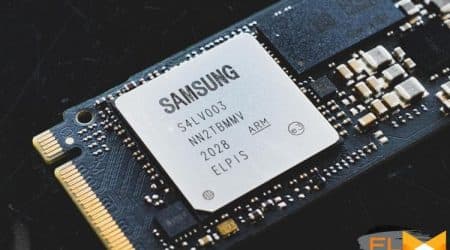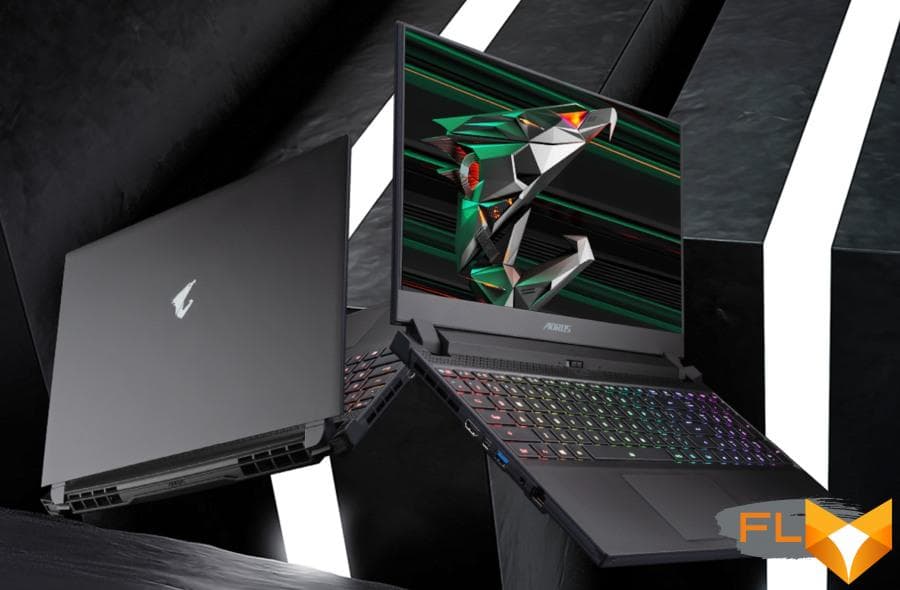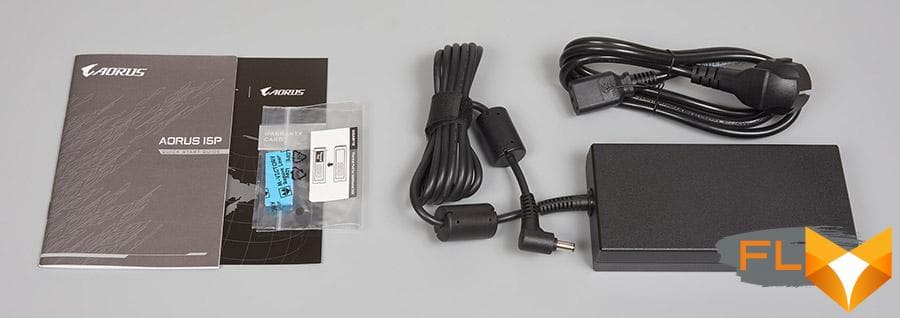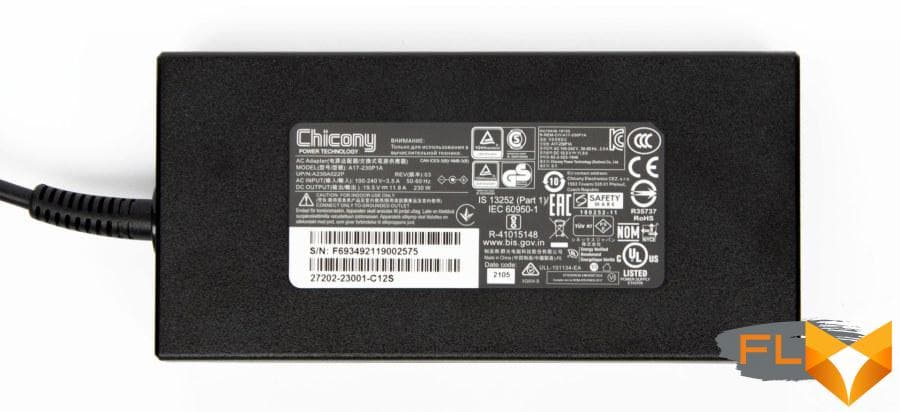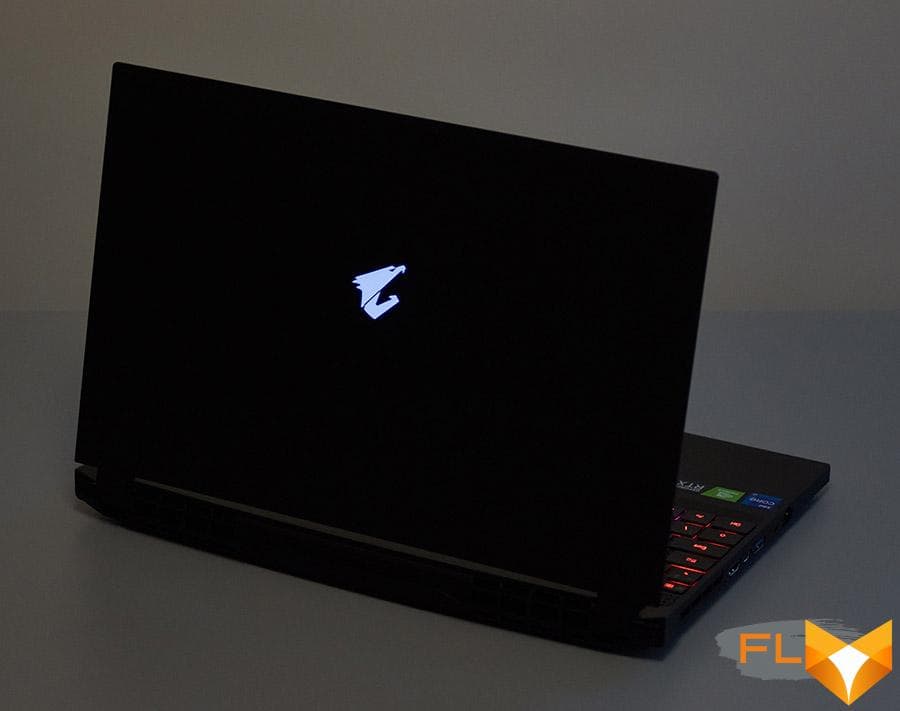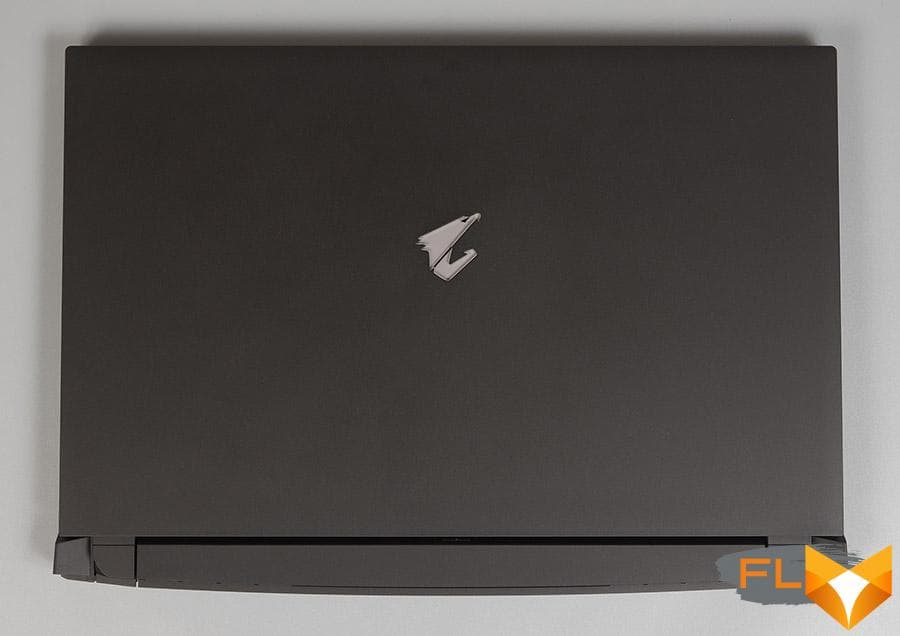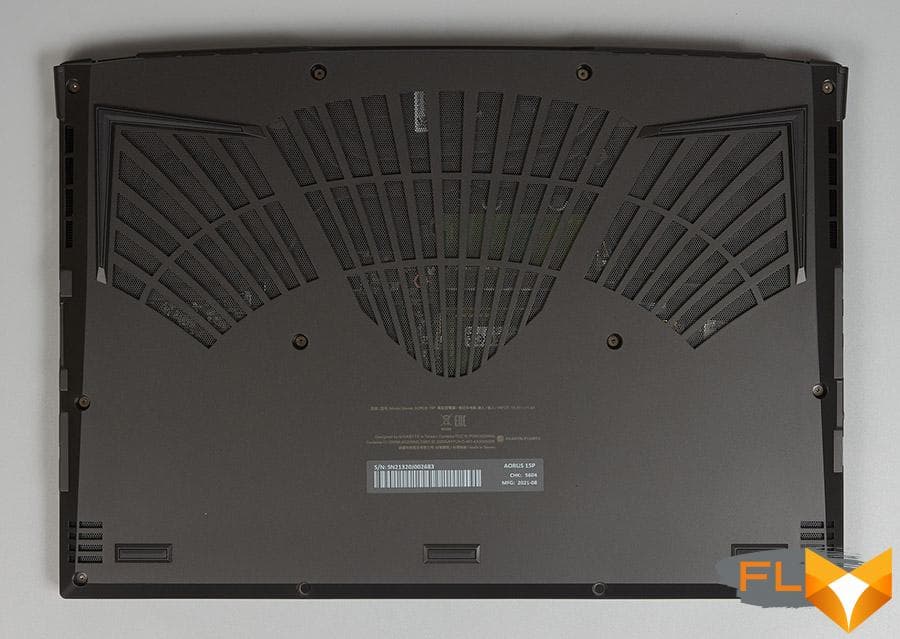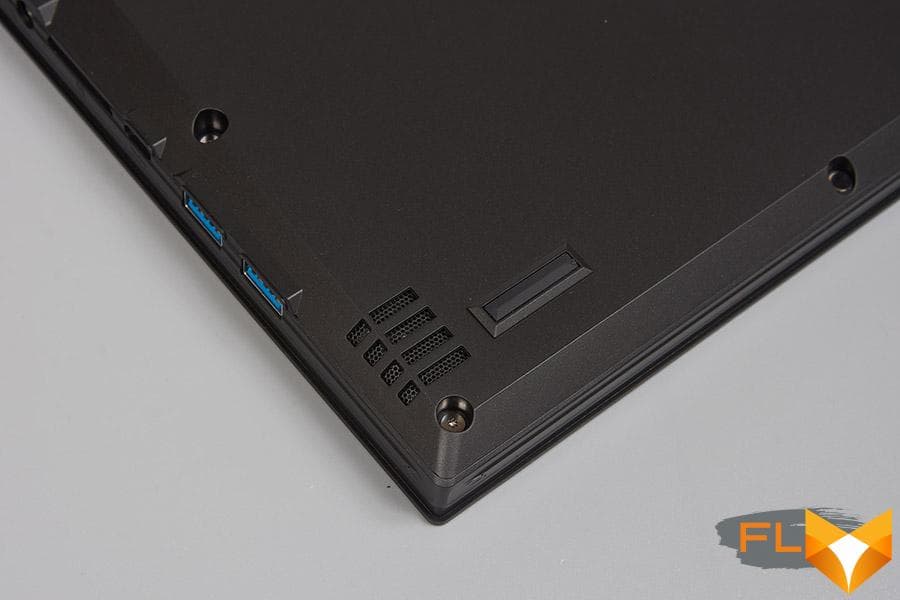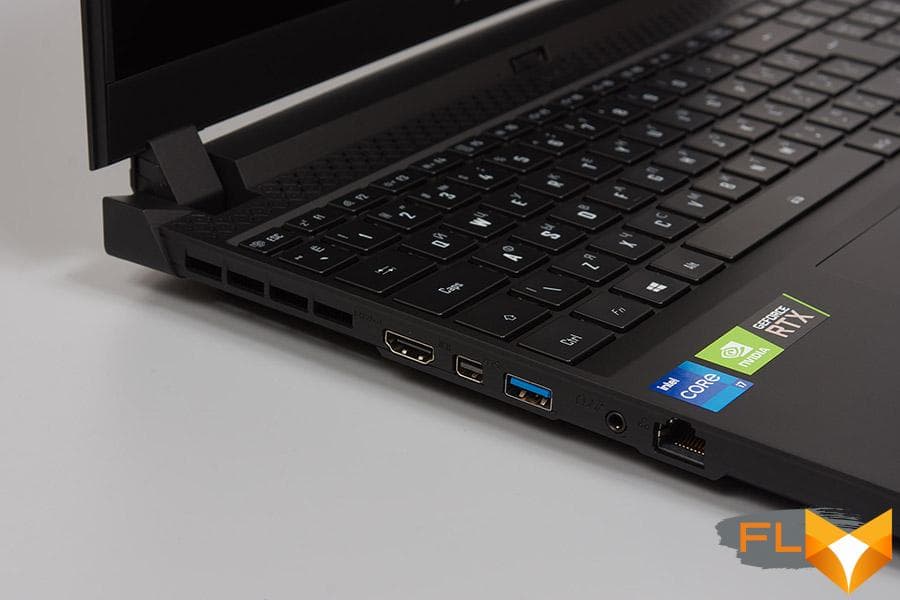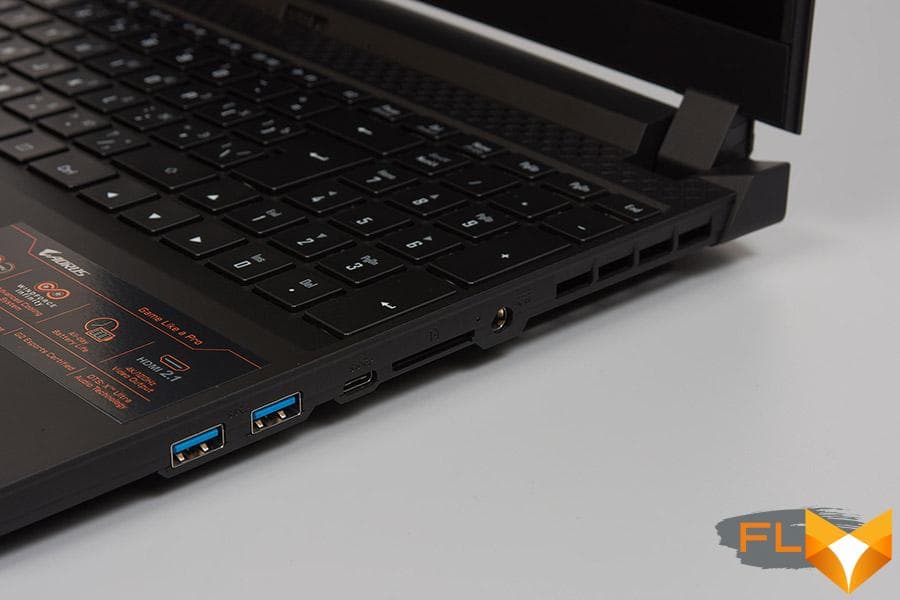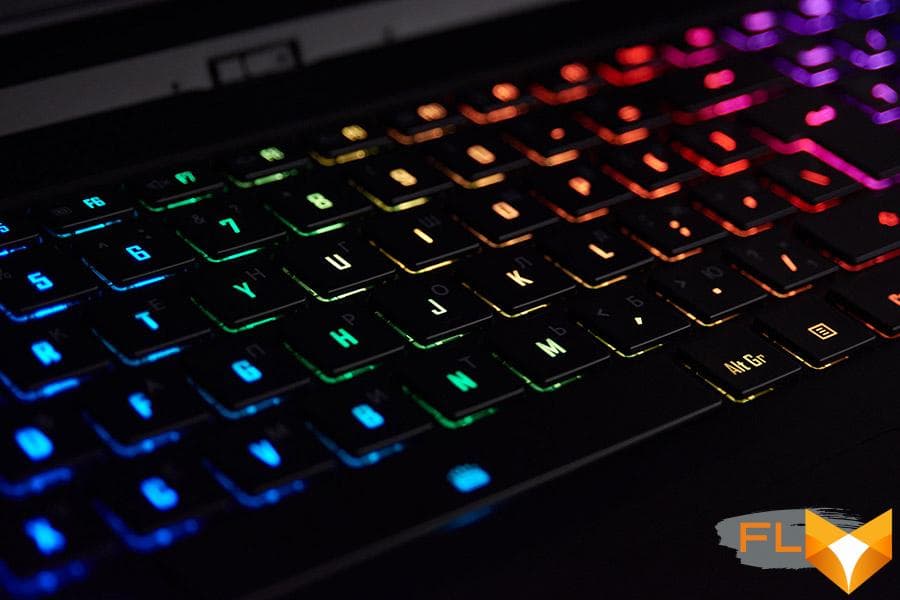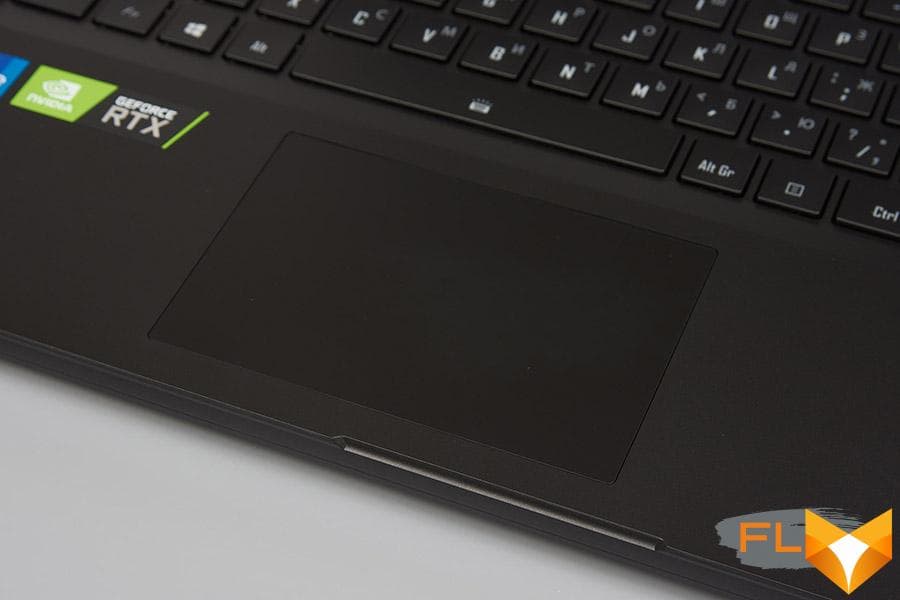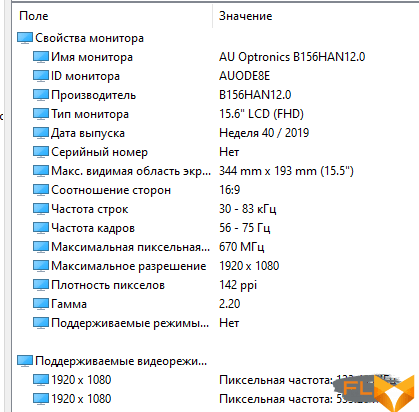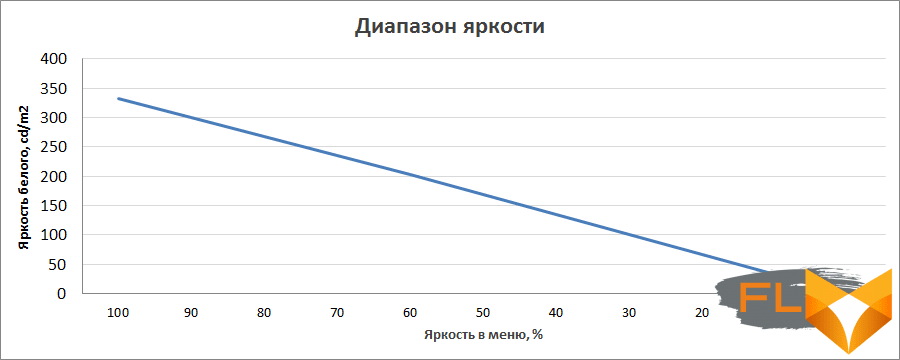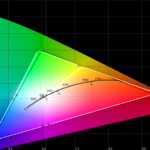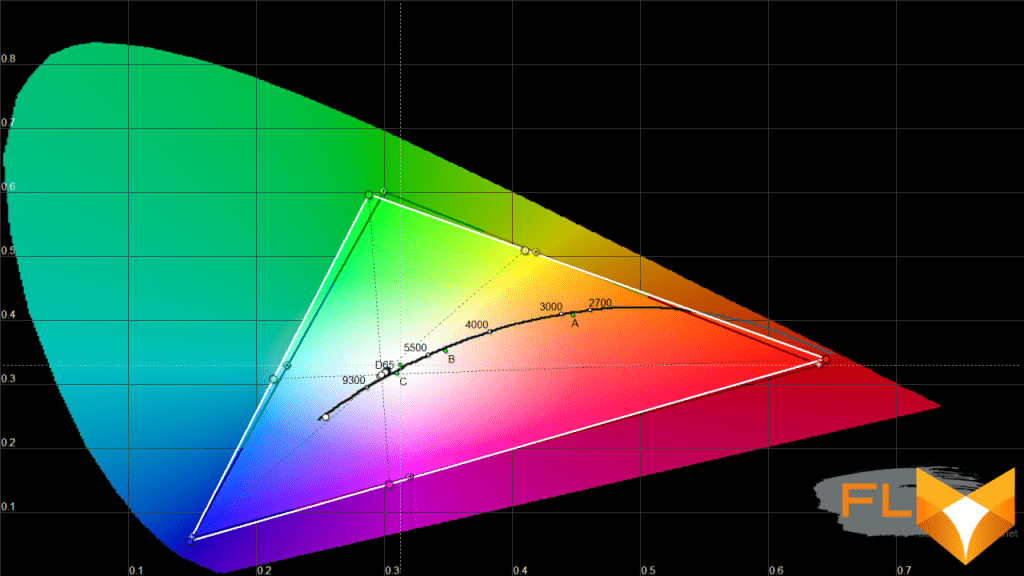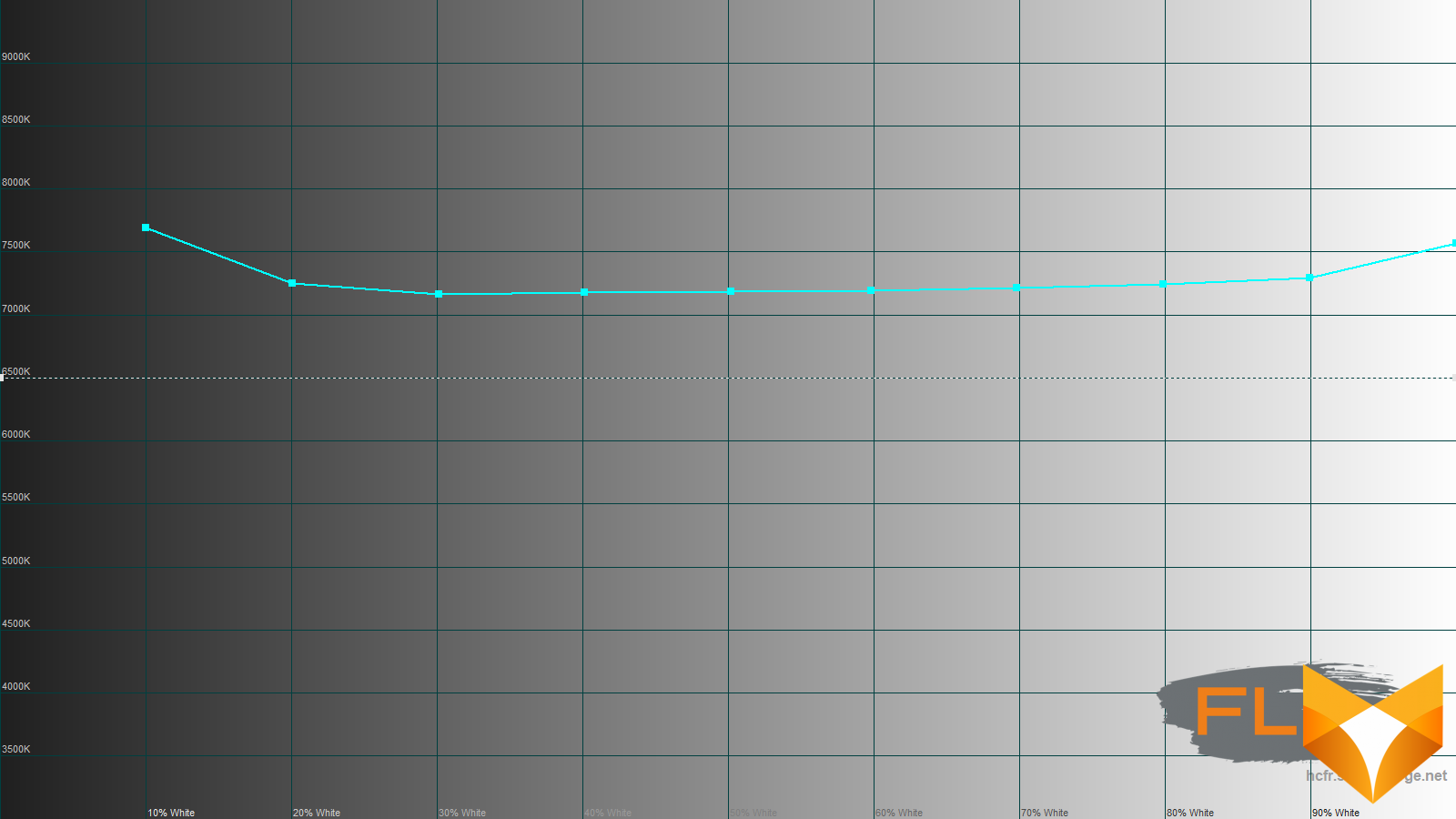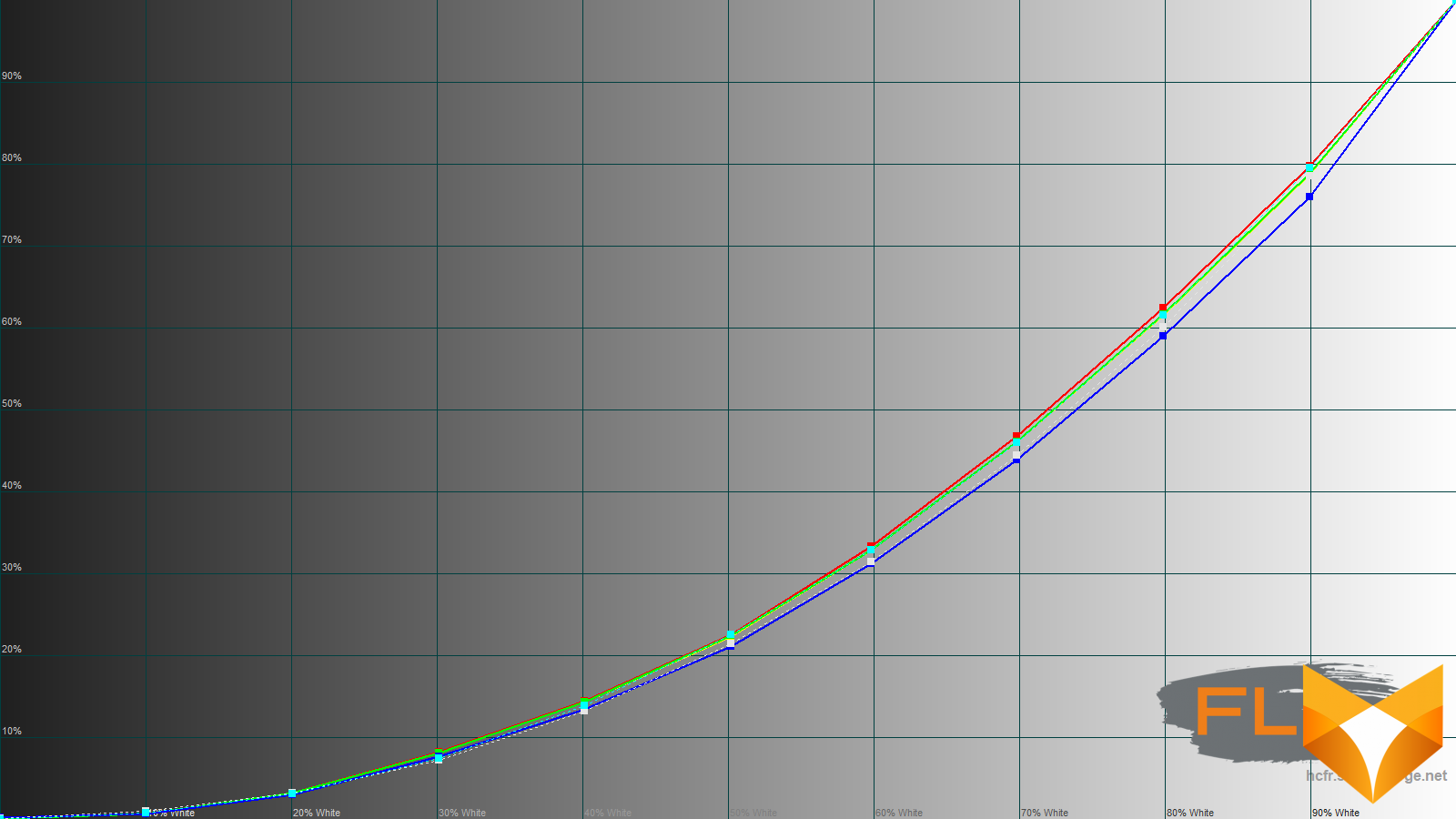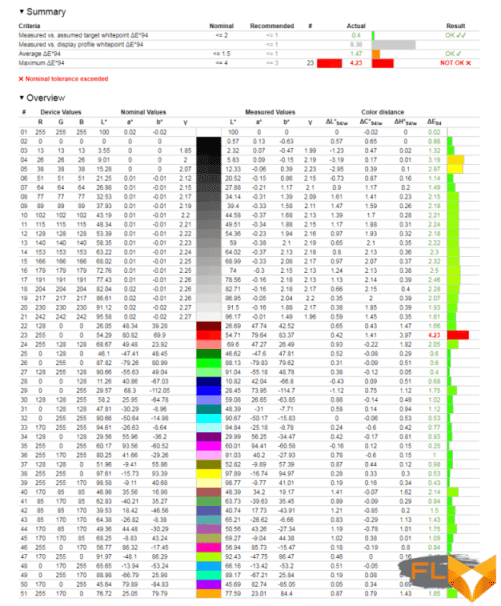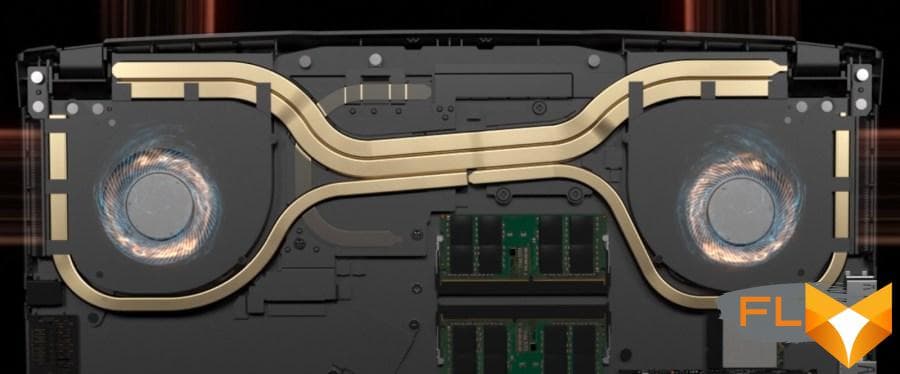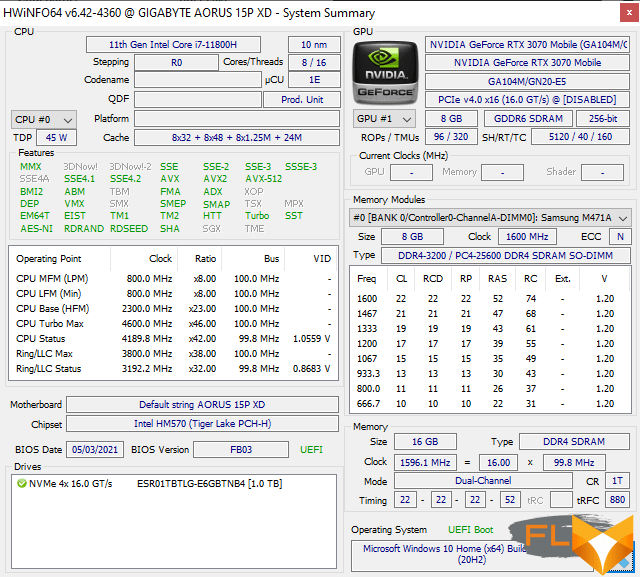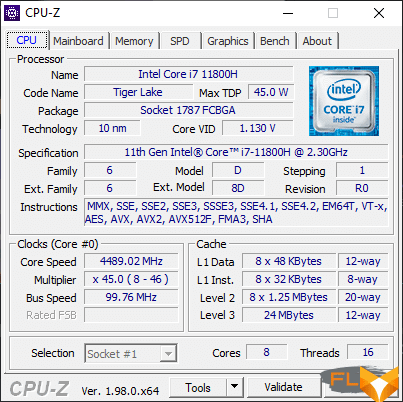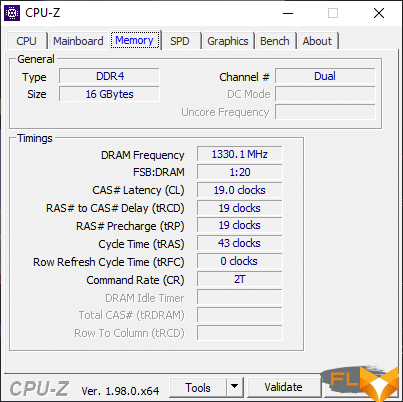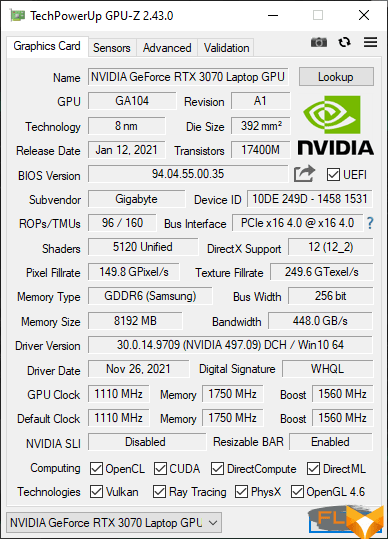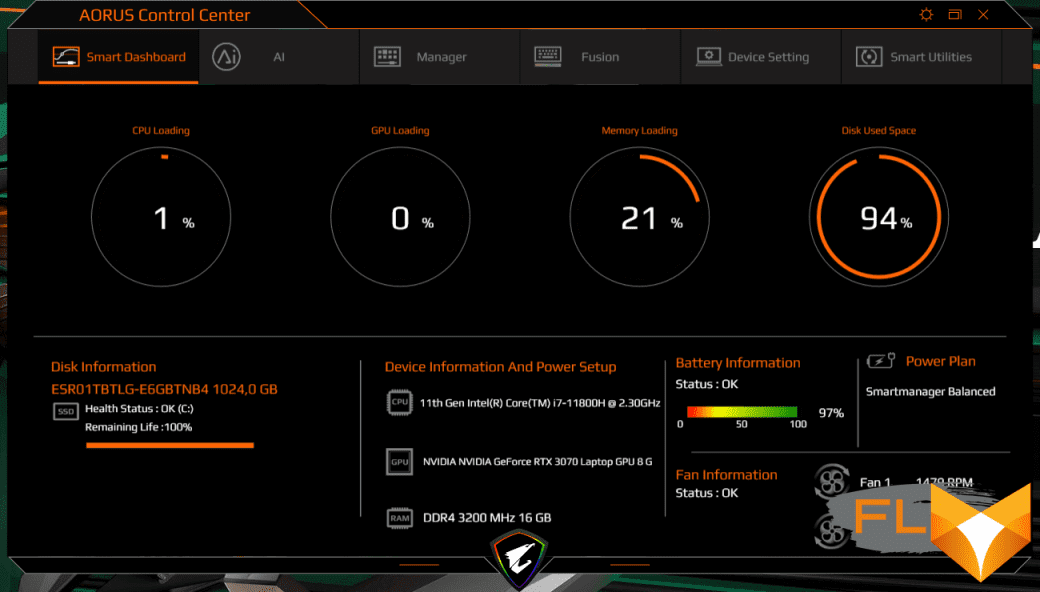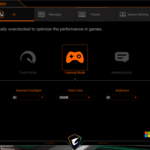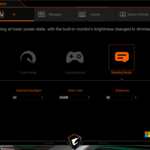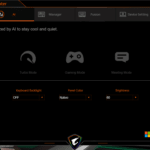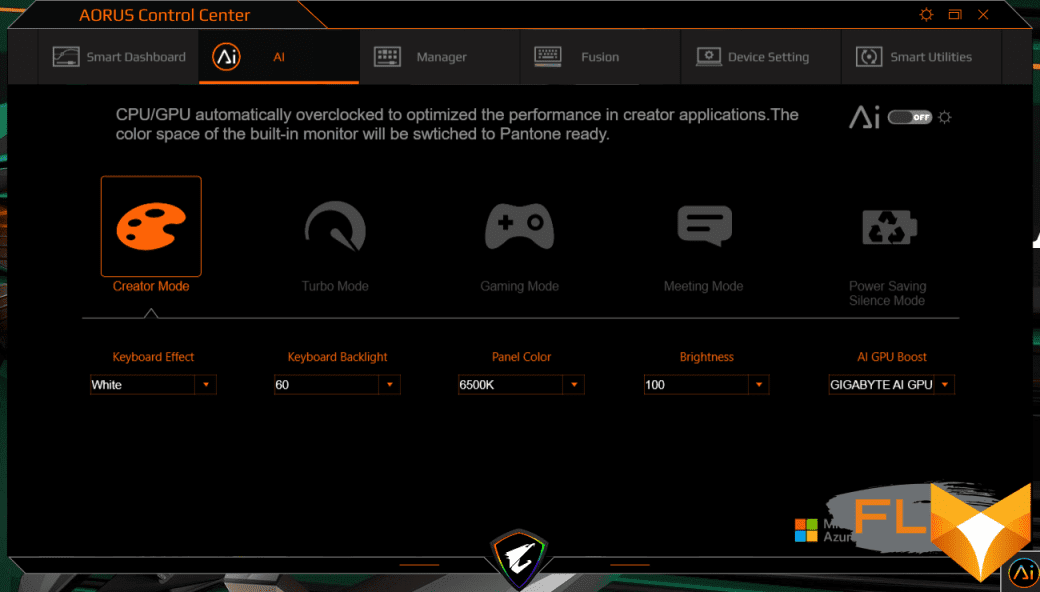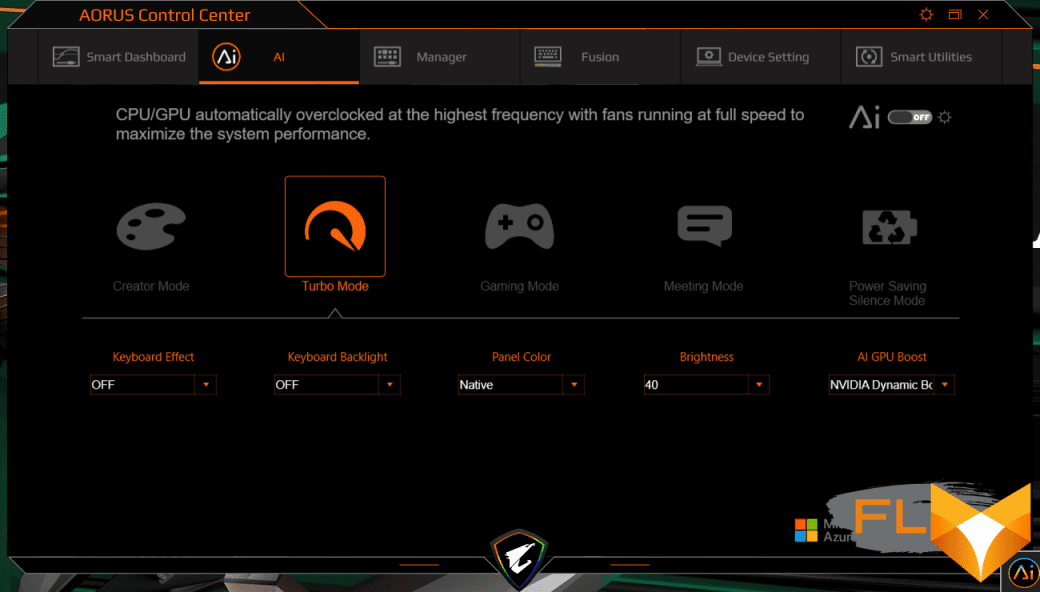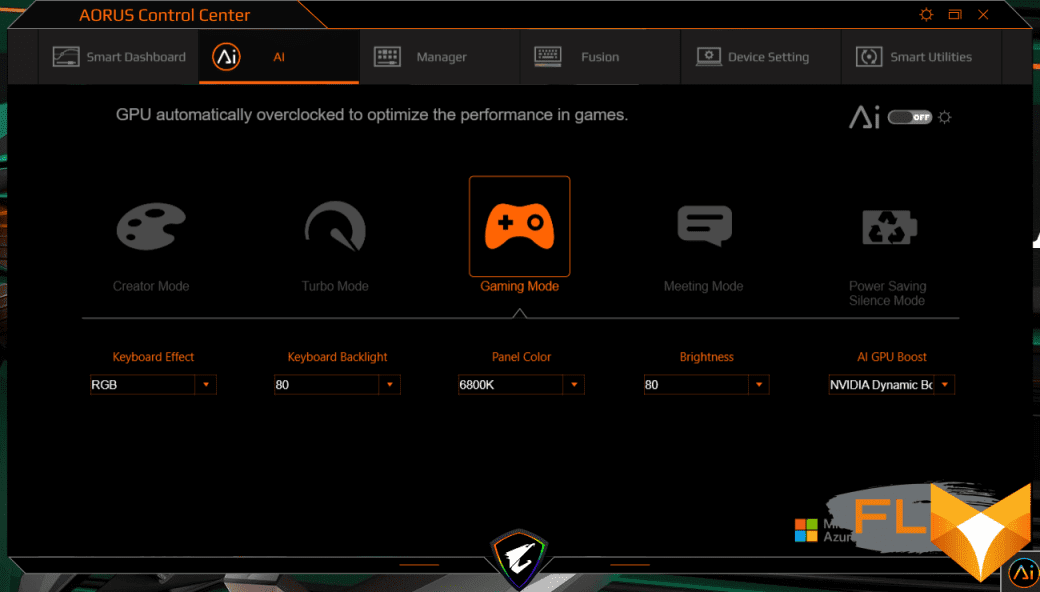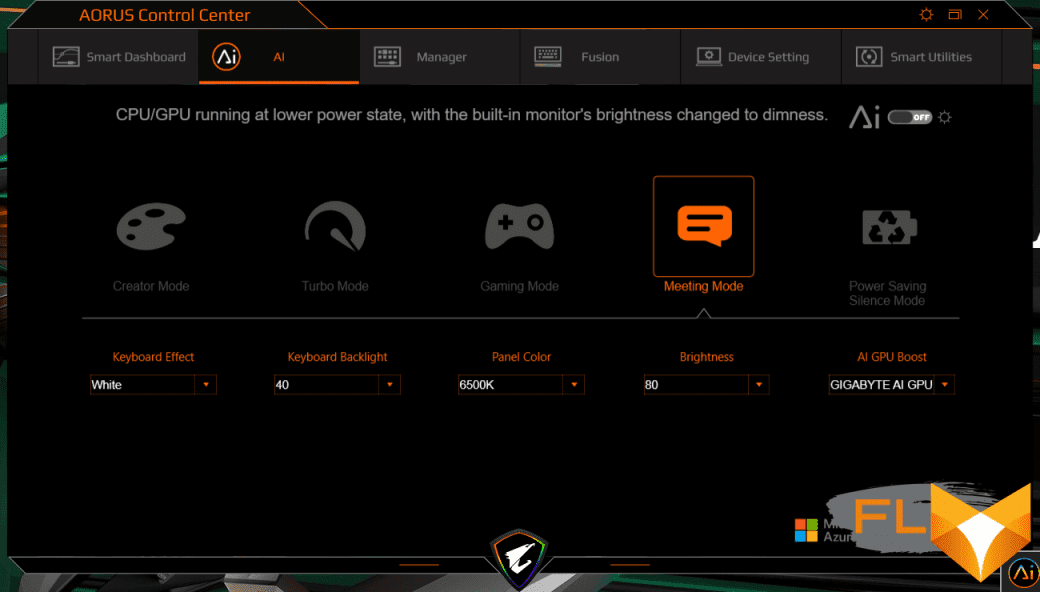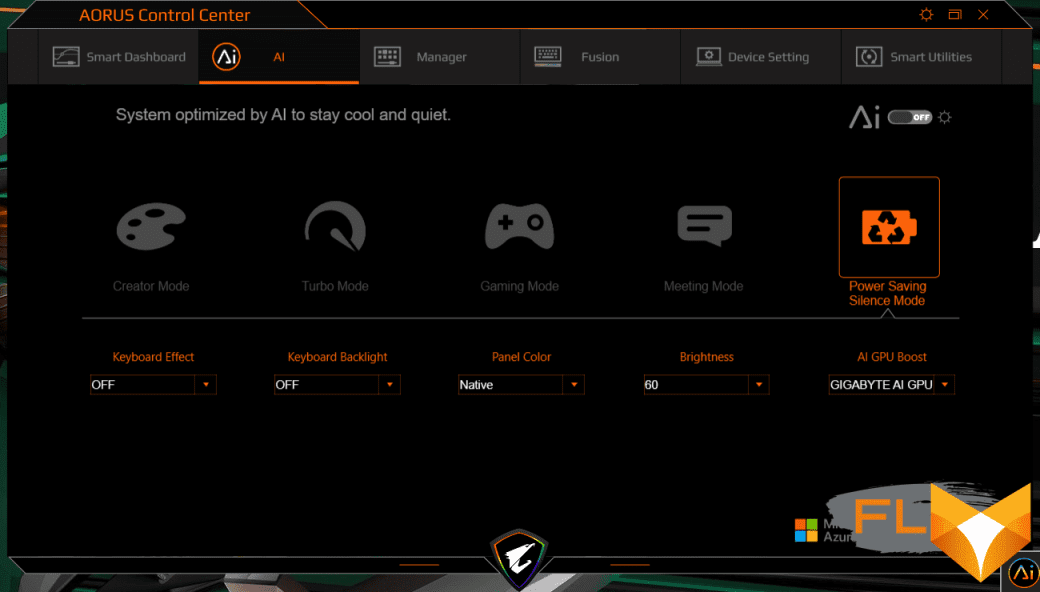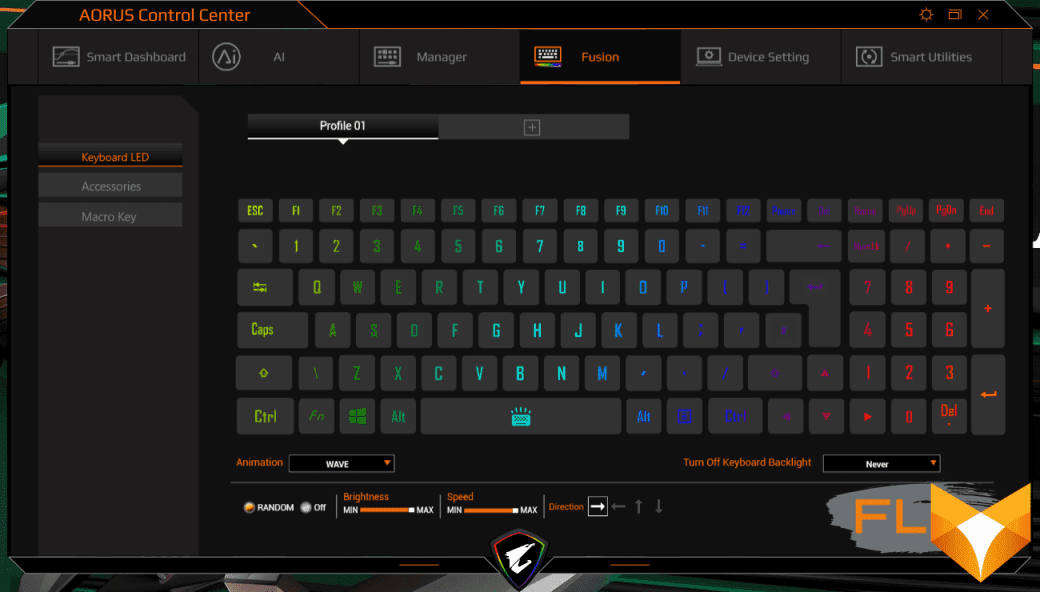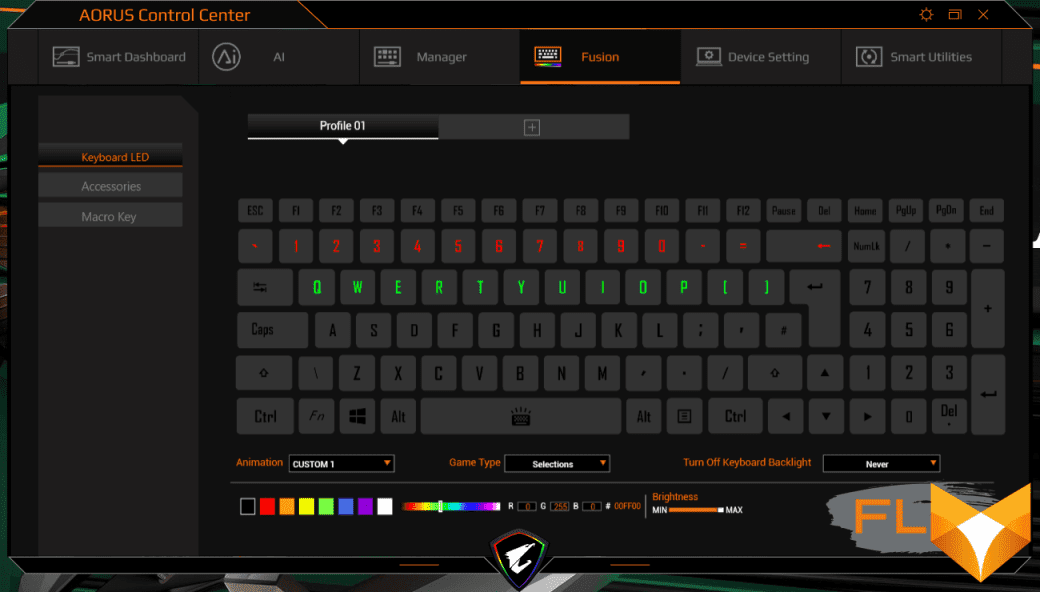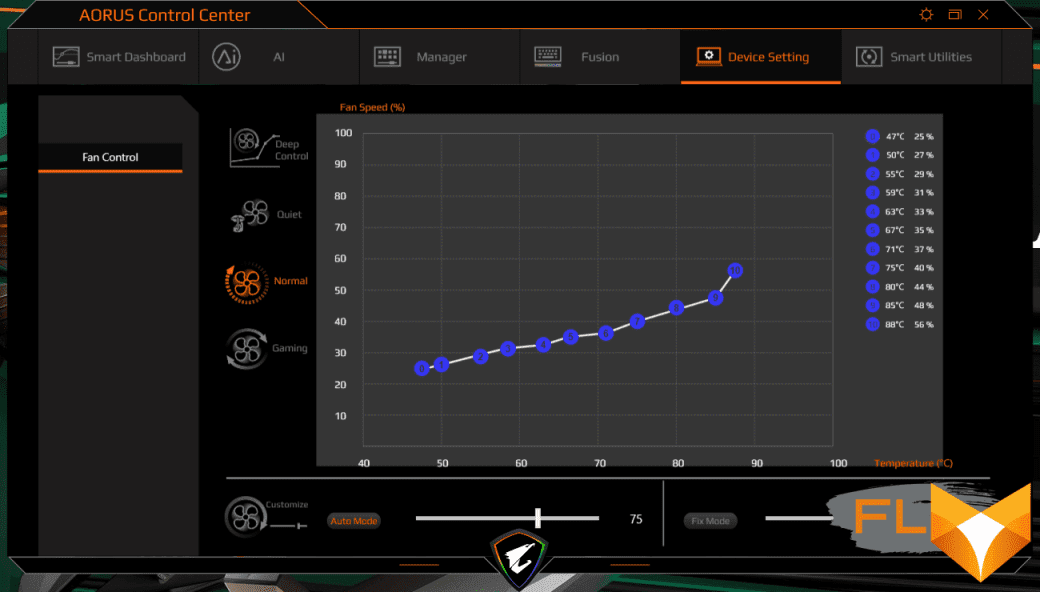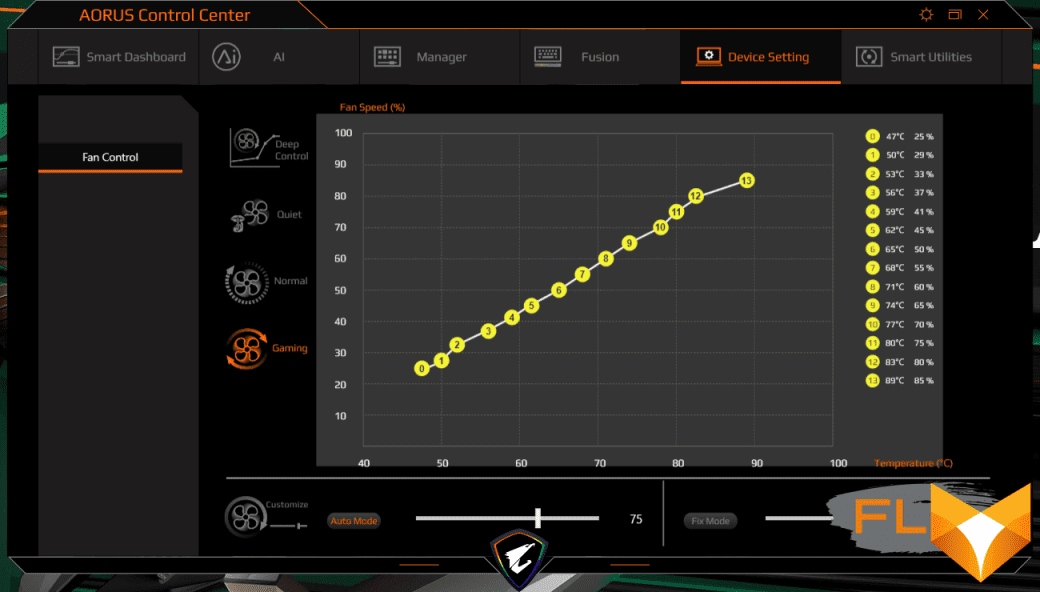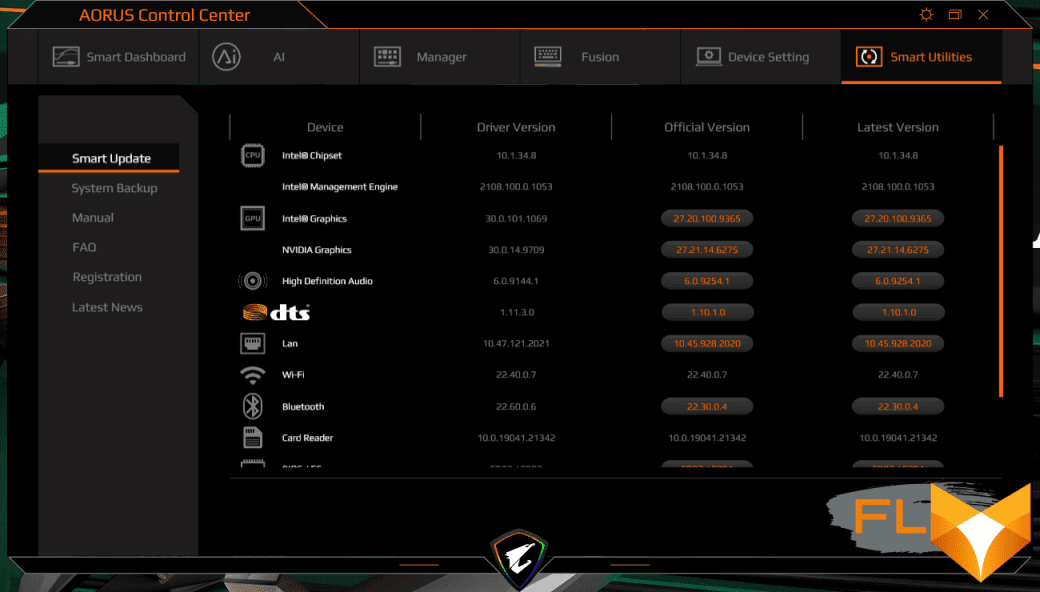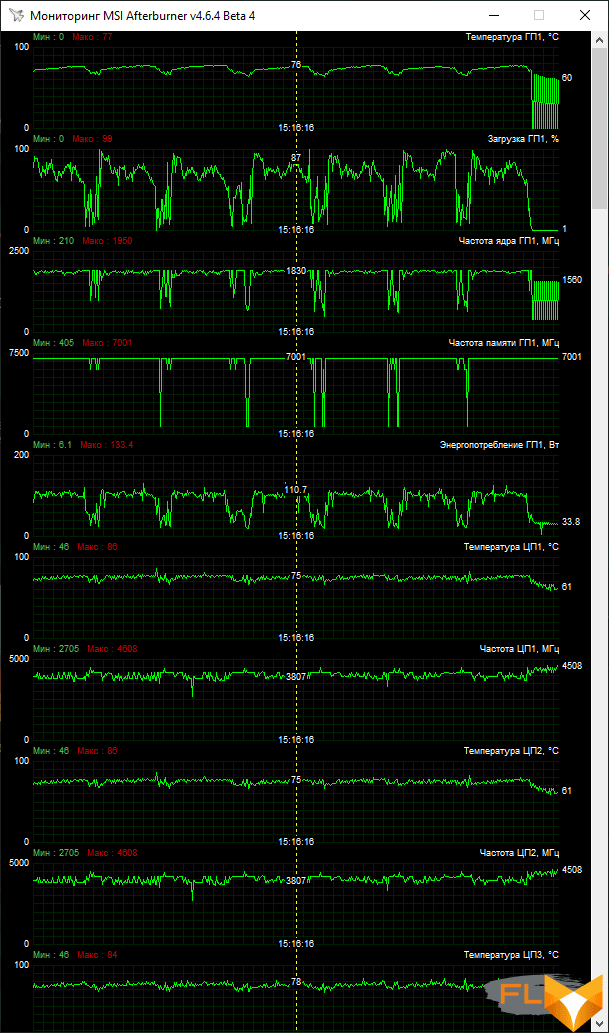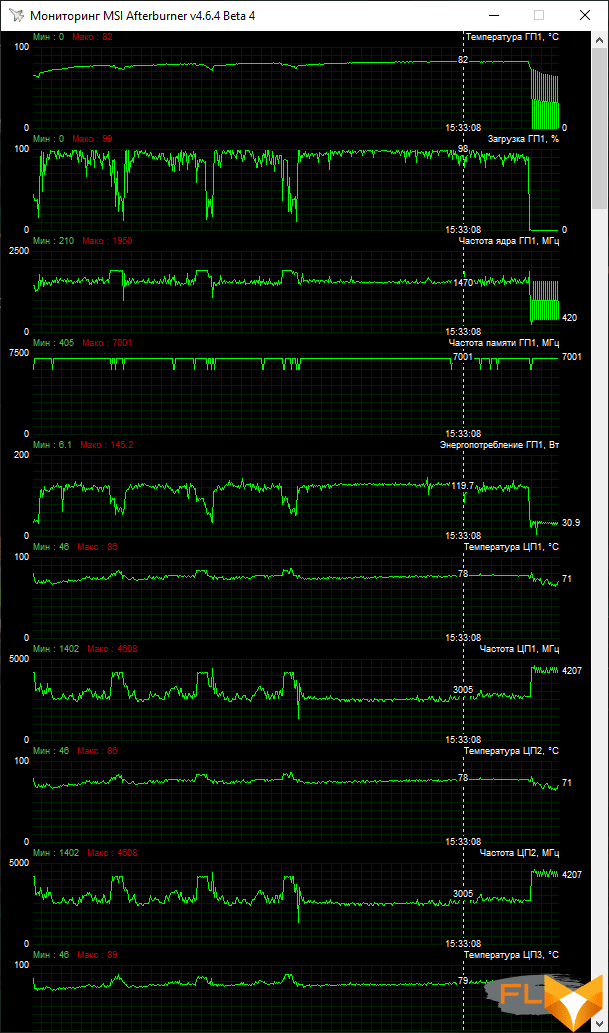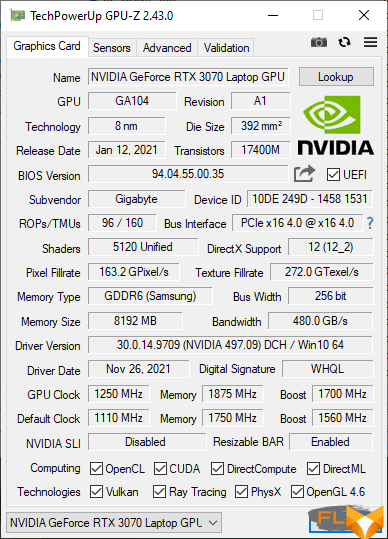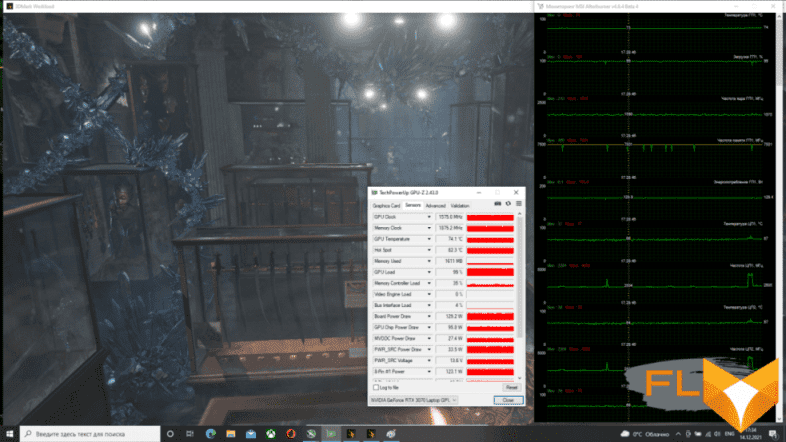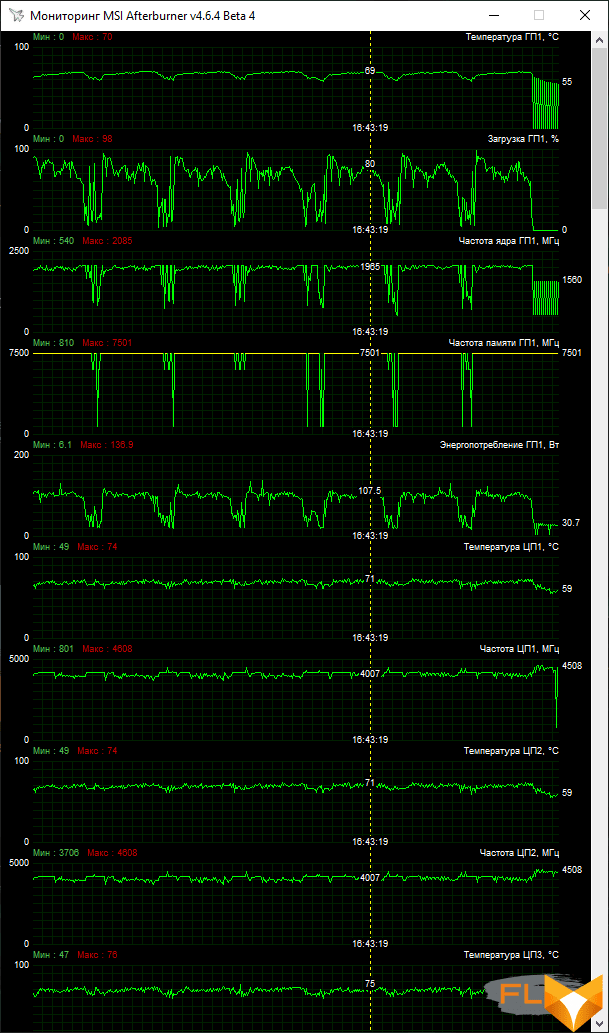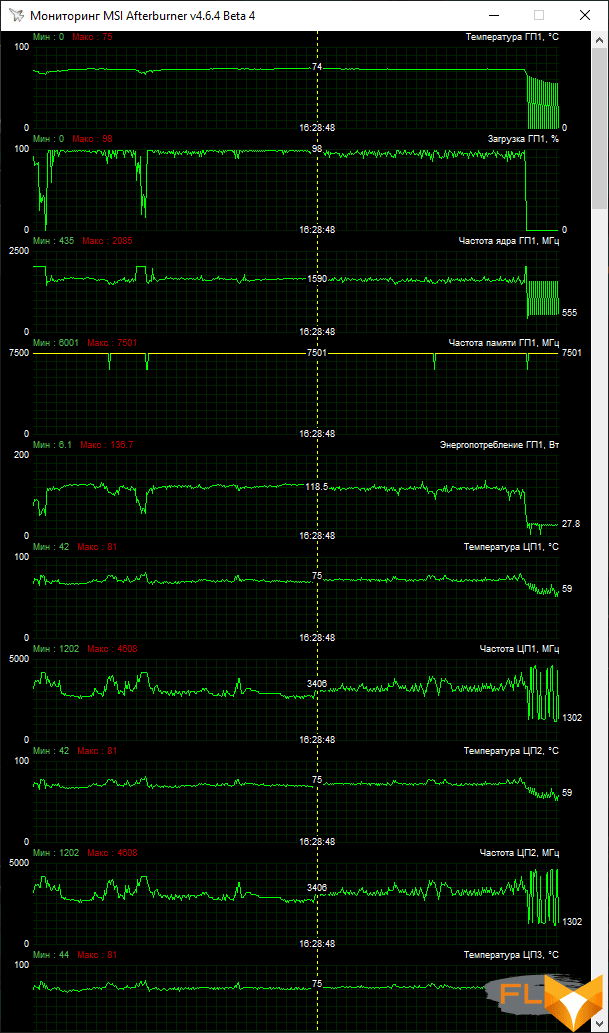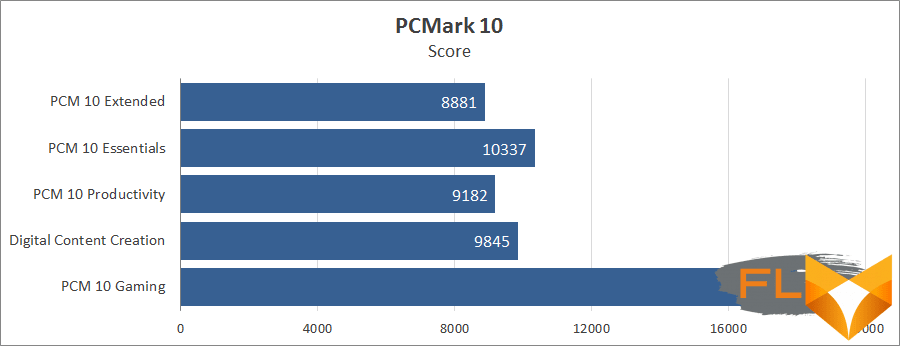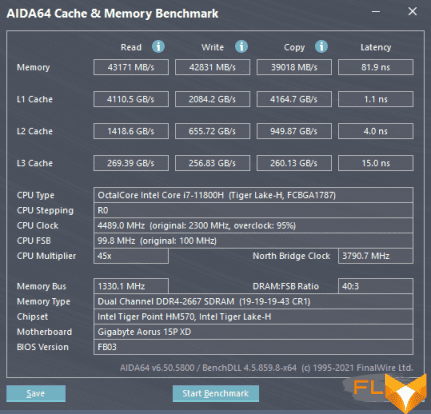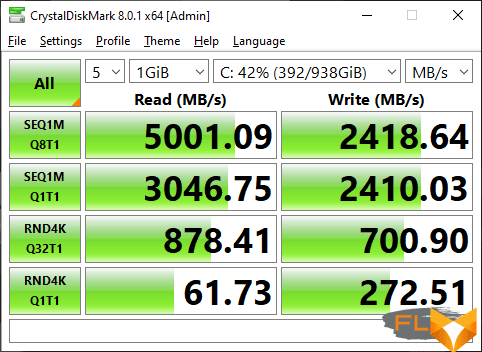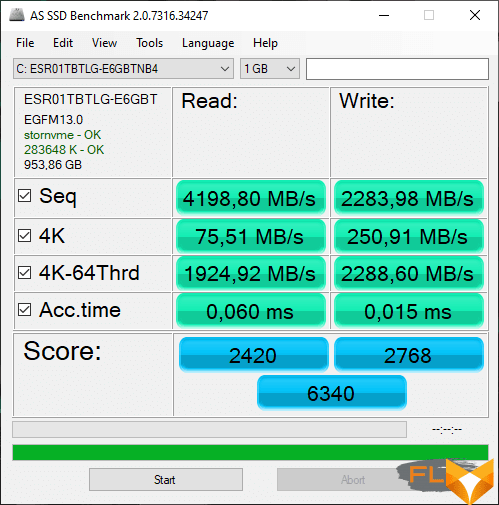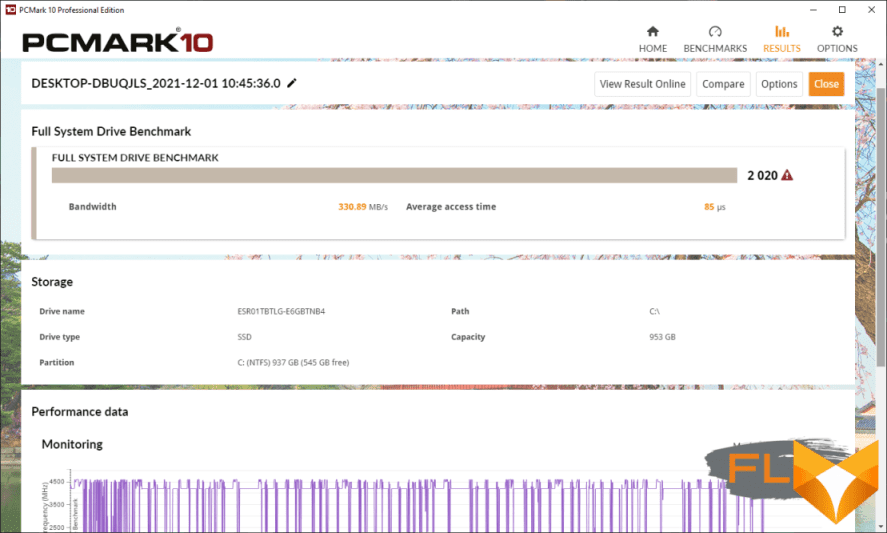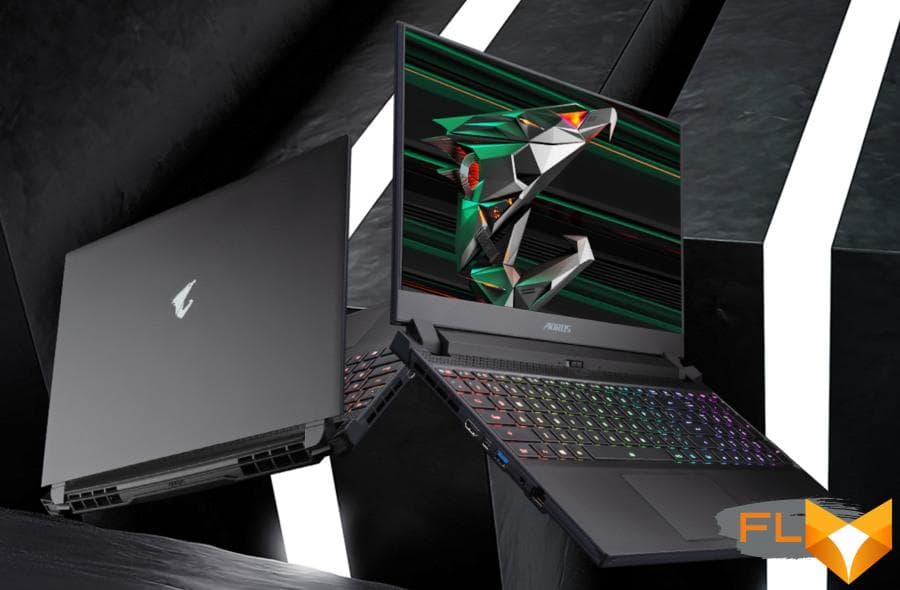


We continue to get acquainted with the current gaming laptops. This time, a Gigabyte laptop, which is produced under the Aorus brand, fell into our hands. This family includes premium gaming products with outstanding features. The Gigabyte Aorus 15P XD fully meets these criteria with a powerful configuration and the use of advanced technologies to optimize performance in different modes.
The Aorus 15P series has been recognized and endorsed by the G2 Esports esports team. The laptops are powered by an 11 Gen Intel Core processor coupled with NVIDIA GeForce RTX 30 series graphics, plus a fast SSD drive and a fast, high refresh rate screen.
Gigabyte Aorus 15P XD (XD-73RU324SH)
The laptop is made in black. The dimensions of the device are 357x254x27 mm with a weight of 2.2 kg. These are the standard parameters for a gaming model with a 15.6-inch screen. Aorus does not take up much space in the workplace, it can be comfortably carried around, but this is not an ultra-slim laptop that claims to be a stylish accessory.
The configuration is based on the Tiger Lake generation Intel Core i7-11800H processor with Boost frequency up to 4.6 GHz. The mobile video card GeForce RTX 3070 in one of the top versions with high frequencies and a power limit of 115 W (maximum 130 W) is responsible for graphics processing. Installed 16 GB of DDR4-3200 memory in dual-channel mode. For data storage, a fast 1TB NVMe M.2 drive is used. A high-quality IPS-matrix with Full HD resolution with a record frequency of 300 Hz is used. A wide range of external interfaces is also provided, there is a webcam, a card reader and an RGB keyboard backlight. Among the unique “chips” – automatic performance tuning for specific applications based on artificial intelligence. The Aorus Control Center application provides extensive monitoring and parameter setting options. Installed operating system Windows 10 with the ability to upgrade to Windows 11.
Full characteristics are presented in the table.
| Notebook model | Gigabyte Aorus 15P XD (XD-73RU324SH) |
|---|---|
| Processor | Intel Core i7-11800H 2.3GHz (up to 4.6GHz Boost) |
| RAM | 16GB DDR4-3200 |
| Display | 15.6″, 1920×1080, 300Hz (B156HAN12.0) |
| Video card | NVIDIA GeForce RTX 3070 8GB (115+W) |
| Disk subsystem | SSD NVMe M.2 ESR01TBTLG-E6GBTNB4 1TB |
| I/O ports | 3x USB 3.2 Gen 1 Type-A, Thunderbolt 4 (Type-C), HDMI 2.1, mini DisplayPort 1.4, Ethernet RJ-45, audio combo |
| Communications | 2.5 Gigabit Ethernet, Wi-Fi 6 802.11ax, Bluetooth 5.2 |
| Multimedia | 720p webcam, stereo, microphone |
| Card Reader | UHS-II SDXC |
| Security | TPM 2.0 |
| Battery, mAh | 6500 |
| Power adapter W | 230W |
| Dimensions, mm | 357 x 254 x 27 |
| Weight, kg | 2,2 |
You can install up to 64 GB of DDR4-3200 RAM. Within the Aorus 15P XD series, different screen options are possible. All of them are designed for a resolution of 1920×1080, but support a frequency of 240, 300 or 360 Hz. Devices of the Aorus 15P YD series with similar characteristics are equipped with the flagship GeForce RTX 3080 graphics card.
Delivery set
The laptop comes in a black cardboard box with a decorative pattern and the Aorus logo.
Standard equipment: power supply with cable, instructions. A nice addition would be a thermal pad for a second NVMe M.2 drive, the installation of which is provided for by the design of the laptop.
The Chicony A17-230P1A power supply is designed for a load of 230W.
Appearance
The laptop is made in a black plastic case. The surface is smooth, but matte and not easily soiled.
The strict design is combined with large air outlets in the back of the case and small “lugs” in the area of the hinges.
The top cover has the Aorus logo with white backlight.
The lid lacks rigidity, it can bend when pressed.
A pleasant surprise was the perforation with large slots for air flow in the lower part of the case. It can be seen that the manufacturer took care of the high-quality cooling of the laptop. And, despite the many holes at the bottom, the case has great rigidity. An additional metal mesh is provided to protect against dust.
In the near corners are sound speakers. This is a standard layout of built-in acoustics.
On the left side of the laptop there are HDMI connectors, mini DisplayPort, USB 3.2 Type-A, 3.5 mm audio jack and RJ-45 Ethernet port.
On the right side, there are two more large USB 3.2 Type-A ports, a Thunderbolt 4 (Type-C) port, and a card reader. This is where external power comes in. On the sides of the case there are also holes for blowing air.
Notebook thickness (excluding rubber feet) up to 27 mm at its widest point. The thin cover allows to expand internal space for more effective organization of cooling. The screen itself rises above the main body and leans back at an angle of about 130 degrees.
The frame around the screen is so narrow that there was no room for a webcam at the top.
The camera with a microphone is located in the center of the protruding part of the case. This is a bit inconvenient as you can’t adjust the camera’s tilt and you have to control your position to always be in the frame. But the camera has a shutter. Next to the camera is the power button, which is specially placed separately from the main keyboard to avoid accidental clicks.
The keyboard is membrane type, full-size, there is a digital block. Of the features, it is worth noting the small left Shift, which is inconvenient for gamers. But there is a big Enter.
There is a full RGB backlighting of the keys with different effects and the ability to fine-tune through the software. Unfortunately, only Latin characters are highlighted, which is extremely inconvenient for working with text in the dark.
There is also such a nuance that the “Wave” effect is enabled by default with a quick shift in colors, and it creates a certain discomfort for the eyes. This is solved by lowering the offset speed or turning on the static backlight mode. But the settings are not saved when you reboot, you have to restart the Aorus Control Center to select your backlight mode. You can quickly turn off the backlight by pressing Fn + Spacebar.
The touchpad with buttons is made in the form of a single panel.
Screen
The Gigabyte Aorus 15P XD has a 15.6-inch matte screen.
The IPS-matrix AU Optronics B156HAN12.0 is used with a resolution of 1920×1080 pixels, the refresh rate is 300 Hz.
By default, the AI control system is active, which provides for changing performance modes, different color profiles, brightness and color temperature. In such a situation, it is difficult to talk about any specific screen parameters. So we first turned off the AI control and ran our standard tests at 120 cd/m².
The screen is measured to provide 99% sRGB and 69% Adobe RGB coverage.
Brightness is adjustable from 1 to 333 cd/m². The contrast ratio is at a high level of 1550:1.
The color temperature is about 7200K, so the overall gamma is slightly shifted towards cold tones.
The average deviation of DeltaE is less than 2 units, which is an excellent result.
Next, let’s look at the characteristics in the available AI control modes. Let’s give data on brightness and color temperature in different profiles. In parentheses are actual measured data.
| Brightness | Color temperature | |
|---|---|---|
| Creator Mode | 60% (202 cd/m²) | 6500K (≈7000K) |
| Turbo Mode | 40% (134 cd/m²) | Native (≈7200K) |
| Gaming Mode | 80% (270 cd/m²) | 6800K (≈7600K) |
| Meeting Mode | 60% (202 cd/m²) | 6500K (≈7600K) |
| Power Saving Silence Mode | 60% (202 cd/m²) | Native (≈7200K) |
At the same time, it should be clarified that different versions of Aorus Control Center offer different brightness for the same profiles, which was verified by personal experience. Only the 6500K mode for Creator Mode and 6800K for Gaming Mode remains unchanged.
The final impressions are only positive – good color reproduction, large viewing angles, high-speed matrix with a record frequency of 300 Hz. Such a screen is suitable for users who work with content, process images and videos. And it’s the perfect choice for gamers, especially those who love fast-paced competitive games.
Internal device
Gigabyte Aorus 15P was provided to us without the right to parse. Therefore, there will be no detailed inspection of the internal structure.
The general cooling scheme of Windforce Infinity is shown on a slide from the official website.
The laptop is cooled by two turbine blocks, which are located in the corners of the case. Each “turbine” has two radiators, and the general blowing of the exhausted hot air is carried out in three directions. Five heat pipes are involved, all hot elements on the board are covered with massive metal plates.
It is also worth noting the presence of two memory slots, which in our case are occupied by Samsung brackets. A 99 Wh battery is used. Near the battery there is a second seat for the drive. The main M.2 NVMe slot contains an ESR01TBTLG-E6GBTNB4 (Phison Electronics) SSD with x4 PCI-E 4.0 interface.
The full specifications of the laptop are presented in the screenshot of the HWiNFO utility.
The board is based on the Intel HM570 Express mobile chipset. The Intel Core i7-11800H processor has eight cores on the Willow Cove architecture, which process 16 threads. The maximum frequency in Boost mode can reach 4.6 GHz with a TDP of 45 watts. The CPU is made using 10 nm SuperFin technology. DDR4-3200 memory operates in dual-channel mode. There is a problem with software monitoring of memory parameters. Tests show adequate memory bandwidth, but in the utilities we constantly observed jumping frequencies with lower values.
Installed mobile video card GeForce RTX 3070 on the GA104 core with 5120 stream processors. This line of NVIDIA mobile graphics cards has many versions with different power limits and different frequencies. The Aorus 15P uses a fast mod that is not stifled by a low power limit. The base frequency of the GPU is 1110 MHz with a Boost Clock of 1560 MHz, 8 GB of GDDR6 memory is installed with an effective frequency of 14000 MHz. Power 115 W with the possibility of a short-term increase to 130 W. Among all the laptops we tested, only the MSI GE66 Raider 10UG used a more productive version of the GeForce RTX 3070 Mobile, the rest will lose in frequencies to the considered option.
Support for Wi-Fi 6 and Bluetooth 5.2 is based on the Intel AX200 controller. Supports 2.5 Gigabit Ethernet network connection based on Realtek RTL8125 controller. The audio path is implemented on the Realtek ALC255 codec.
Software
Every high-end gaming laptop has a software application for parameter monitoring and fine-tuning. In this case it is Aorus Control Center.
The first tab displays basic information about hardware configuration, component loading, fan speed, and battery status.
Aorus laptops are the first to implement AI-based performance management and the Microsoft Azure cloud platform. AI control seamlessly switches between CPU and GPU operating modes by adjusting the fan speed. Depending on the load, the laptop will balance the parameters. And at the same time, a learning process takes place through the online platform to work more effectively with new applications. It sounds ambitious, but in reality the difference between the profiles is small. By default, this system is always enabled. All related settings are located in the second tab of the Aorus Control Center.
This system provides five performance profiles:
- Creator Mode;
- Turbo Mode;
- Gaming Mode;
- Meeting Mode;
- Power Saving Silence Mode.
Each profile has its own keyboard backlight settings, screen color temperature, screen brightness, and performance management mode. In the latter case, you can choose Gigabyte’s AI performance management system, NVIDIA Dynamic Boost power balancing system, or disable performance management. The exception is Gaming Mode, where only NVIDIA Dynamic Boost technology is available. If necessary, you can adjust any of the settings, such as screen brightness and keyboard backlight. There is a function to completely disable AI control.
This system works very accurately. If you launch a game or some kind of 3D test, Gaming Mode is turned on, if Discord is launched, Meeting Mode is activated, if Adobe Photoshop is launched, Creator Mode is activated. The only complaint is the notification system with frequently pop-up messages in the corner of the screen.
On the third tab of the Aorus Control Center, there is a quick control of some system features. From here you can adjust the volume, brightness, turn on the camera and communication tools, switch screens, change the basic assignment of the F1–F12 keys, etc.
The Fusion tab contains keyboard backlight settings. There are adjustments for dynamic effects – glow brightness, speed, direction. You can create your own profiles with individual backlighting of each key, which is useful if you want to highlight a specific control layout for games. Macros are available for any keys. It is possible to bind your settings to specific applications.
The Device Settings tab allows you to change the operating mode of the fans. You can manually select ready-made profiles for different modes. And the screenshots below clearly show that the Gaming Mode curve provides for faster fans for better cooling. You can completely change the fan algorithm with manual curve setting in Deep Control.
The last tab of the Aorus Control Center includes functions for tracking new versions of drivers and software, a backup function, an electronic manual, and more.
DTS Sound Unbound and DTS:X Ultra applications are also installed in the system, which allow you to activate surround sound effects and select the optimal sound mode for different games.
Cooling efficiency and noise level
Now let’s talk about operating temperatures and check the frequency indicators in the load.
The laptop was tested in a room with a temperature of 21–22 °C. To simulate a long gaming load, a looped 3DMark Time Spy stress test was launched. The AI control system has been disabled.
In this mode, the GPU temperature reached 79-80 ° C at Boost frequencies of about 1500 MHz, the video card power reached 130 watts. But the performance of the Intel Core i7-11800H processor was unpleasantly surprised – only 2.4 GHz. But the operating temperatures were about 70 °C. Even the peak temperatures at the start of the test, when there is an initial jump in CPU frequencies, did not exceed 80 °C. And all this was combined with a fan speed of 3300/3500 rpm, which is quite low values for a gaming laptop.
Now let’s test the laptop in the AIDA64 stress test. At first, only the processor and the memory subsystem were tested, then a full test with an additional load on the video card.
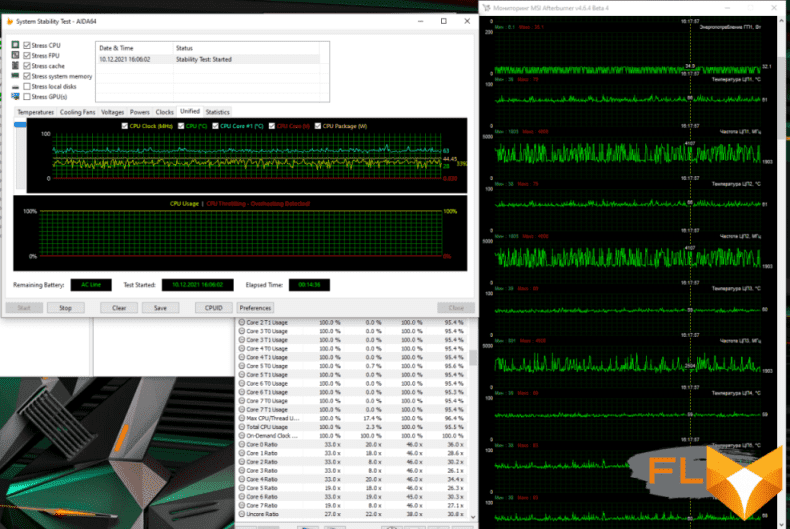
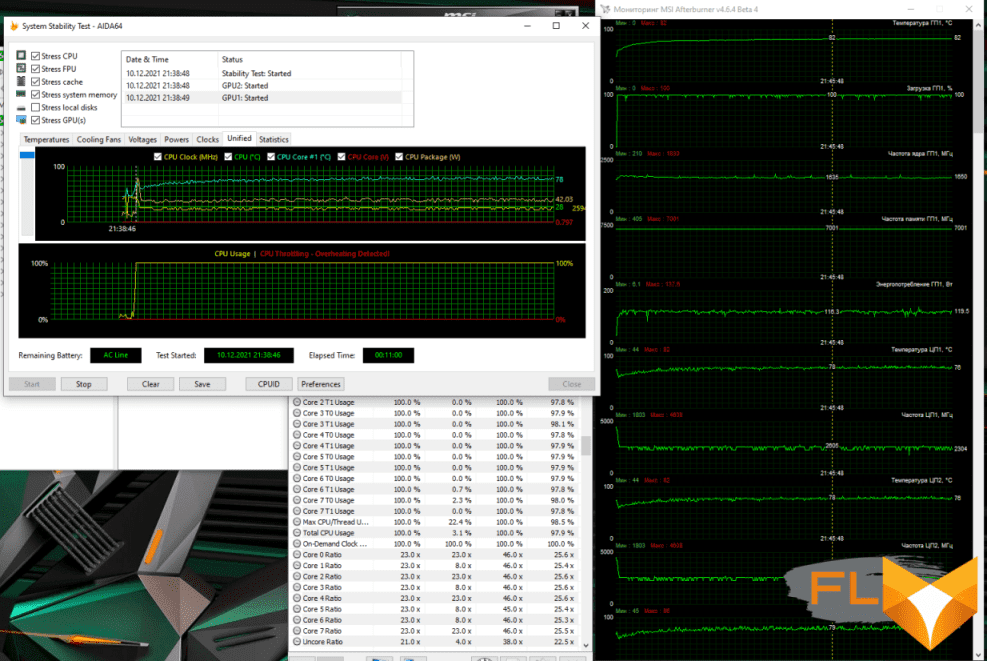
Without a load on the video card, the processor cores show frequency jumps up to 4.1-4.2 GHz, although the average value is closer to 3.3 GHz. At full load on all components of the processor core operate in the range of 2.4-2.6 GHz. The core temperature approached 80 °C.
As a result, we can say that the Aorus 15P is colder than many laptops. We did not see operating temperatures of 90-100°C, which is the norm for top gaming models. On the other hand, the processor is a little “strangled” and at maximum load it seriously reduces the frequencies. And this does not depend on cooling – switching to Gaming Mode did not affect the final frequencies in the 3DMark Time Spy stress test. However, in real games, the laptop holds higher frequencies better.
For example, below are the parameters monitoring data during the tests of Far Cry 6 and under a long load in Cyberpunk 2077. In the first case, the Intel Core i7-11800H cores showed frequencies up to 3.8-4 GHz with a GPU frequency of about 1800 MHz (the video card is not loaded fully). In the second case, the CPU cores showed a greater frequency spread with drawdowns below 3 GHz, and GPU frequencies below 1500 MHz.
In all modes, CPU temperatures were below 90°C, and GPU heating did not exceed 82°C.
Overclocking
Gaming Mode provides a slight acceleration of the GeForce RTX 3070 graphics card. Boost Clock increases from 1560 to 1593 MHz, and the memory accelerates to 14420 Gb / s.
But we decided to go further and test the maximum potential of the GeForce RTX 3070. For this, an accelerated fan operation algorithm is first set to provide better cooling.
In this mode, it was possible to increase the base frequency of the graphics chip by 140 MHz, and accelerate the memory to an effective value of 15,000 MHz.
The average increase in GPU frequencies was about 100 MHz. In the 3DMark Time Spy stress test, we saw a slight drop in temperatures with 3900/4200 rpm fans.
You can evaluate the change in frequencies in Far Cry 6 and Cyberpunk 2077 from the screenshots below.
Test results
Overall Performance
PCMark 8
PCMark 10
The graph shows the overall result of the extended test and the results of individual groups of tests as part of this benchmark.
In old and new PCMark, the Aorus 15P outperformed the Acer Predator Helios 300 PH315-54 based on the same Core i7-11800H processor.
CPU-Z Benchmark
Unexpectedly high result in a single-threaded test and a high score in a multi-threaded one.
Cinebench
In these tests, the Aorus 15P lost out to a similar configuration in the Acer Predator Helios 300.
Geekbench 5
The results for the Aorus 15P with the Core i7-11800H are slightly different from the MSI GE76 Raider with the Intel Core i9-11980HK.
V-Ray 5 Benchmark
Below are the rendering results of different test scenes on the processor and GeForce RTX graphics card.
x265 HD Benchmark
Expected result at the level of other 8-core Intel processors of this family.
AIDA Cache & Memory Benchmark
The memory bandwidth corresponds to DDR4-3200 dual-channel mode.
Disk subsystem
The ESR01TBTLG-E6GBTNB4 drive performs well in all tests.
A decent score in the specialized PCMark test for drives with an average throughput of 331 MB / s.
Game Applications
Testing was carried out in standard mode and when overclocking the GeForce RTX 3070.
3DMark
First, the results of Time Spy in normal mode are shown, then in overclocking.
The Aorus 15P laptop outperformed the Acer Predator Helios 300 PH315-54 with a weaker version of the GeForce RTX 3070. After overclocking, it shows a result at the level of the MSI GE76 Raider with a more powerful version of the RTX 3070.
The situation is similar in the ray tracing test.
Aliens: Fireteam Elite
Excellent performance in this game. The laptop delivers over 100 frames per second at maximum graphics settings.
Assassin’s Creed Valhalla
In Valhalla, the Aorus 15P outperformed the MSI GE76 Raider, although the latter has a higher clocked GeForce RTX 3070.
Cyberpunk 2077
In Cyberpunk at normal Ultra quality, you can play with performance above 50 frames, overclocking brings it to 60 frames.
With tracing, it’s hard to hit 50 frames even with DLSS active. The overall results are weaker than those of MSI GE76 Raider, which corresponds to the difference in the frequencies of video cards.
Days Gone
Excellent results and absolutely comfortable performance figures.
Deathloop
The slight difference between normal Ultra quality and ray-traced graphics indicates that the weak point is the processor. At the same time, Aorus 15P easily provides high fps that will satisfy the most demanding user.
Far Cry 6
The Aorus 15P also handles Far Cry 6 well, delivering good frame rates even with tracing-based effects enabled. The increase from overclocking is noticeable only in heavy mode with “beams”.
Horizon Zero Dawn
In this game, you can safely turn on Ultra-quality.
Forza Horizon 5
The laptop allows you to comfortably play the new Forza with “extreme” graphics quality. Overclocking has almost no effect on the results.
Mafia: Definitive Edition
Another game with excellent performance figures.
Marvel’s Guardians of the Galaxy
In this game, the laptop produces a good frame rate even at maximum tracing settings. The slight difference from the normal graphics mode and the lack of gain when overclocking points to the processor as the main potential limiter.
Red Dead Redemption 2
Aorus 15P users can safely activate Ultra quality in RDR 2.
Resident Evil: Village
Excellent results without tracing and with “rays”. The benefits of overclocking are noticeable in the second mode.
The Witcher 3: Wild Hunt
The laptop provides high performance in The Witcher at maximum graphics settings with all the effects.
Watch Dogs: Legion
With normal graphics, you can expect a performance of about 60 frames, with tracing enabled with DLSS, this is 40-50 frames. Overclocking does not have a noticeable effect on the overall performance.
Battery life
To test the battery life, we ran some tests with dedicated benchmarks in PCMark. The Modern Office test simulates a combined office workload. The second test measures the operating time when playing Full HD video. Screen brightness is fixed at 120 cd/m² to compare results with other laptops. Keyboard backlight is off.
The laptop lasted more than five hours in both tests, which is a good result. Heavy workload or high screen brightness will reduce battery life.
Conclusions
Gigabyte Aorus 15P XD (XD-73RU324SH) is a high-performance gaming laptop in a standard design. Of the external features, only the illuminated logo can be noted. The thin plastic screen cover requires some care in handling. The laptop is equipped with a high-quality screen with good color reproduction and a high refresh rate of 300 Hz. A powerful configuration based on the Intel Core i7-11800H processor is used in conjunction with a powerful version of the NVIDIA GeForce RTX 3070 mobile video card. An important advantage is well-organized cooling with a large number of airflow holes. This allows for cooler operating temperatures compared to most similar sized laptops, and the Aorus is also below average in noise. Under extreme load, a serious decrease in processor frequencies is possible, but in applied tasks and games, the laptop provides high results at the level of other laptops with similar characteristics. In games, you can count on Ultra-graphics at a native resolution of 1920×1080, in most cases you can even activate ray tracing. Also worth noting is a fast SSD, a wide range of external interfaces, the presence of 2.5 Gigabit Ethernet and a backlit keyboard (but only for the English layout). Aorus Control Center is a multifunctional application for managing system parameters. A unique AI-based performance profile management system has been implemented, but the practical difference between the modes is minimal. The presence of user settings allows you to adjust this system for yourself. All this is useful for an advanced user, especially the presence of settings for flexible control of cooling fans. But the constant brightness changes and pop-up messages can be annoying. AI control can be disabled, but after disconnecting / connecting external power, it is reactivated. As a result, we have a good gaming laptop that needs a little software refinement. And all the small nuances look insignificant against the background of the main advantages.
